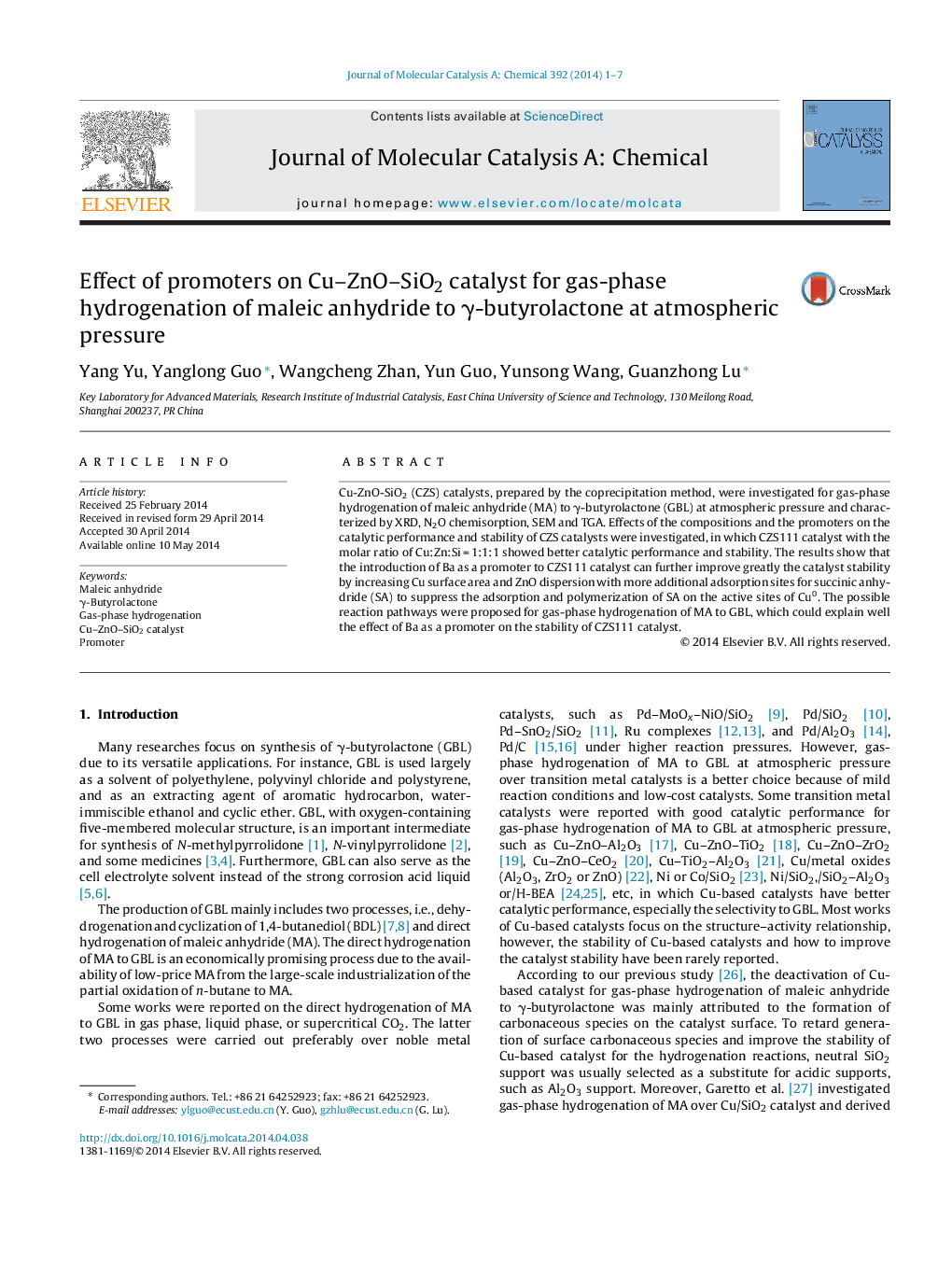| Article ID | Journal | Published Year | Pages | File Type |
|---|---|---|---|---|
| 65129 | Journal of Molecular Catalysis A: Chemical | 2014 | 7 Pages |
•Cu–ZnO–SiO2 catalyst showed better catalytic performance and stability.•Ba as a promoter can further improve greatly the catalyst stability.•Higher Cu surface area and ZnO dispersion can suppress the catalyst deactivation.
Cu-ZnO-SiO2 (CZS) catalysts, prepared by the coprecipitation method, were investigated for gas-phase hydrogenation of maleic anhydride (MA) to γ-butyrolactone (GBL) at atmospheric pressure and characterized by XRD, N2O chemisorption, SEM and TGA. Effects of the compositions and the promoters on the catalytic performance and stability of CZS catalysts were investigated, in which CZS111 catalyst with the molar ratio of Cu:Zn:Si = 1:1:1 showed better catalytic performance and stability. The results show that the introduction of Ba as a promoter to CZS111 catalyst can further improve greatly the catalyst stability by increasing Cu surface area and ZnO dispersion with more additional adsorption sites for succinic anhydride (SA) to suppress the adsorption and polymerization of SA on the active sites of Cu0. The possible reaction pathways were proposed for gas-phase hydrogenation of MA to GBL, which could explain well the effect of Ba as a promoter on the stability of CZS111 catalyst.
Graphical abstractFigure optionsDownload full-size imageDownload high-quality image (154 K)Download as PowerPoint slide
